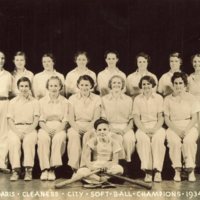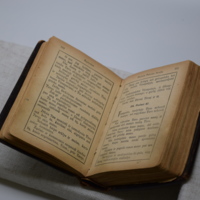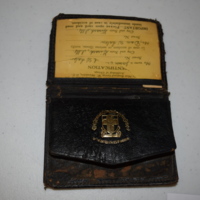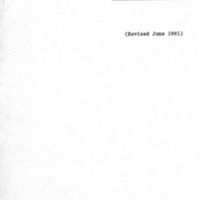Browse Exhibits (4 total)
Sports and Recreation in Illinois

If you, root, root, root for the Cubbies, watch the Chicago Bears play on a Sunday afternoon, cheer on the Fighting Illini, or watch the Blackhawks dominate, you may be a true blooded Illinoisan. Sports and recreation are a big part of who we are as natives. Families come together to spend time with one another while enjoying a game or attending a school event. Like many states, our roots lie in our native sports stadiums, because that is where we watched our heroes defy the odds, break records, and follow their dreams.
This exhibit includes small-town and professional sports teams and memorabilia. While also including high school and small-town recreation. These items all tell a story, they all have a past, and they hold great importance to Illinois history.
Lithuanians in Illinois: A New Life

The late 19th century saw the first major wave of Lithuanians into America. Thousands of Lithuanian people came to the Springfield Illinois area. Lithuanians fled harsh repression experienced under the Russian Empire. Lithuanians in Russia suffered poverty, conscription, and a ban on their language. At first Lithuanian men came to Sangamon county to work in the coal mines. After the men found work, the rest of the family would come over the Atlantic ocean to join them. These Lithuanian families formed their own community in Springfield. This community, united in their faith as well as their language and history, built the Saint Vincent de Paul Catholic Church in 1909.
This collection of items brings together a rich history of the Lithuanian families that lived in the Springfield area during the 19th and 20th centuries. Please enjoy these artifacts and the history connected to them. Included in this collection, we will explore the photos of Lithuanian families, pictures of the old Saint Vincent de Paul Catholic Church, and scans of select documents. The journey of this collection will help us better understand the Lithuanian history in the Springfield Illinois area.
Coal Mining and Identity

Coal mining was once the burning heart of the Illinois economy. However, since after the Second World War, the coal mining industry in Illinois has been in decline. Where once there were thousands of mines in operation, now there are dozens. Despite its reduced economic relevance for the state, the culture of coal mining lingers in the lives and memories of Illinois residents. More than just an occupation, coal mining touched every aspect of life from religion, to social class, to individual and community identity.
This exhibit uses items from the 2024 History Harvest to tell the stories of coal miners here in Illinois, focusing heavily on how occupations create shared bonds of identity. Each item has something to say about the history of coal in Illinois and abroad, as industry connected the world, coal, one of its main fuels, connected people. A United Mine Workers Union card from 1898 offers an example of the convergence of organized labor and coal mining in communities that were often marginalized based on ethnicity. A coal miner’s leather wallet from 1918 filled with Catholic memorabilia indicates the degree to which coal mining and religious affiliation were intertwined. Two figurines made from Welsh coal connected miners across an ocean due to a shared identity and profession. The miner’s award box from Peabody Energy showed how miners celebrated their own when they were able to retire, and the gifts they chose to commemorate this occasion. The pipe from a long gone church organ shows the importance of faith and community to immigrant miners. The Mother Jones dinner program shows the impact of a national figure who forever impacted unions and the coal mining industry across the united states.
Integration into the Workplace

It is necessary for jobs to integrate their employees into the workplace, its rules and regulations, and its culture. Depending on a job and its requirements, there are a variety of ways—some more involved than others—in which workers can become accustomed to or a part of workplace practices. Recording such methods in an archive allows for the recognition of the diversity of these practices and how they have shifted over time.
This collection represents papers and documentation that welcome and orientate individuals to the workforce. Included in this collection are orientation documents that establish the Andersen Consulting dress code in the 1990s. This dress code details the standards of appearance and dress for women working for Andersen Consulting. Next is a stock (share) of ownership in the Boston Celtics from the late 1980s. This stock was available for purchase in the gift shop of the Boston Garden, and is a true share of ownership for the Celtics. Third is a license given to an individual to welcome them to the Aiken County Sheriff's Department. This particular license is for the Detention Division of the Aiken County Sheriff’s Department, which covers Aiken’s detention center. The fourth and final item in this collection is a program for the inauguration of the Illinois Senate from January 2023. This program lists all the Senators of the 103rd Illinois General Assembly.
References:
Basketball Reference. “Boston Celtics Franchise Index.” Accessed November 7th, 2024. https://www.basketball-reference.com/teams/BOS/.
Charles Schwab. “What Are Stocks.” Accessed November 8th, 2024. https://www.schwab.com/stocks/understand-stocks.
Keck, Patrick M. “State legislators sworn in, 103rd Illinois General Assembly begins.”The State Journal Register (Springfield, IL), Jan 12, 2023. https://www.sj-r.com/story/news/politics/state/2023/01/12/state-legislators-sworn-in-103rd-illinois-general-assembly-begins/69798849007/.
Lang, Robert M. “The Hidden Dress Code Dilemma.” The Clearing House 59, no. 6 (1986): 277–79. http://www.jstor.org/stable/30186540.
